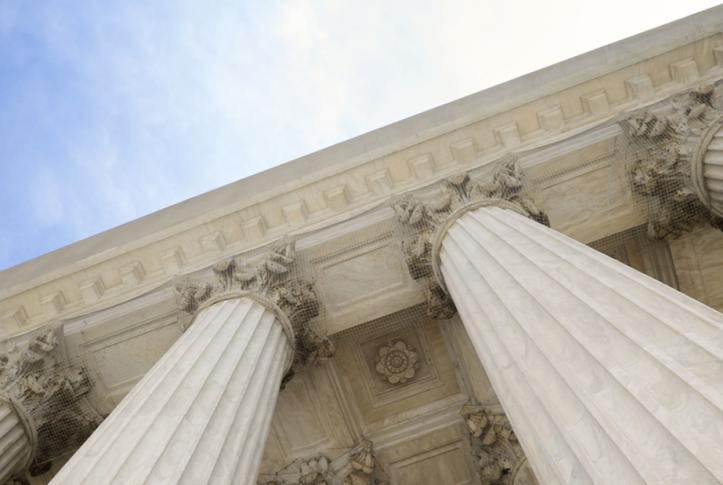On March 28, a federal district court in Washington, D.C., invalidated the core of a Trump administration rule designed to alter radically the federal government’s long-standing approach to regulating association health plans (AHPs). We’ve written about how the new rule poses significant risks to consumers, health care providers, and insurance markets by making it easier for AHPs to offer coverage that is exempt from key Affordable Care Act (ACA) provisions.
In addition to these policy objections, the regulation was also challenged on legal grounds, as being inconsistent with the federal statute it purports to interpret. (That’s the Employee Retirement Income Security Act (ERISA), the federal law under which employee benefit plans are regulated.) Last week’s court decision removes the legal cover the administration had sought to extend to AHPs to circumvent the ACA.
AHPs and the Administration’s New Rule
AHPs have what state insurance regulators have called a “colorful and troubling history,” one “plagued by insolvencies” and widespread fraud and abuse.
In general, AHPs are regulated by “looking through” the association to focus on its members and by requiring that the coverage issued to each member adheres to the same standards that would apply had it been purchased in the wider market. Association coverage purchased by an individual must meet standards applicable to the individual market, while coverage bought by a small employer is subject to small-group market rules.
Until 2018, the only exception to this rule arose in “rare instances” where AHP members were bound together by a “commonality of interest” (other than obtaining health coverage) such that they effectively operated as a single employer. In these unlikely cases, AHPs generally would be treated as large-group coverage for purposes of federal law, rendering them exempt from ACA consumer protections that apply only to individual and small-group health insurance.
In 2017, the president issued an executive order seeking to make it easier for insurance products “to avoid many of the [ACA’s] . . . requirements” and suggesting specific changes to the U.S. Department of Labor’s (DOL) decades-old interpretation of ERISA. The resulting rule adopted these suggestions, reinterpreting “commonality of interest” to create a second, far-easier-to-meet standard for AHPs to qualify as a single large employer. It also redefined “employer” to permit sole proprietors to be classified as a group for purposes of joining an employer-based AHP.
The Court’s Decision
The recent ruling upholds a challenge to these regulatory changes brought by Democratic attorneys general in 12 states. In its decision, the court found the administration’s rule to be “clearly an end-run around the ACA.” But the reason its key provisions don’t pass legal muster has to do with ERISA. The court concluded that DOL’s unprecedented expansions of what counts as a commonality of interest (mere geographic proximity) and what it means to be an employer (individuals who employ no one) “ignor[e] the language and purpose” of ERISA. Because they are unreasonable interpretations of federal law, the court set them aside.
Next Steps
The Fate of the Rule
The court’s ruling is a straightforward invalidation of the administration’s new, easier-to-meet pathway to single large-employer status and less regulatory oversight. But the story isn’t over yet: the administration is considering an appeal of the decision. Alternatively, it could attempt to rewrite the rule to be consistent with federal law. Given the deficiencies the court identified, this seems a tall order, though perhaps not an insurmountable one.
AHPs and Their Enrollees
The new rule was to take effect on a staggered timeline that depended on the type of AHP seeking to take advantage of it. As of the date of the court decision, the rule was in effect for some types of AHPs but not others. Partly for this reason, it’s not clear how many people are actually enrolled in an AHP offering coverage under the new rule. Reports from AHP proponents suggest that while at least a couple dozen entities have been launched, nationwide enrollment is fairly modest.
For those who do have such coverage, the decision shouldn’t take it away or relieve AHPs from paying valid claims.
However, an AHP operating under the new rule probably no longer qualifies for special treatment as a single employer under ERISA. Unless the AHP is in the rare position of meeting DOL’s original, far-more-stringent test for single-employer status, it now lacks any legal basis for marketing large-group coverage to entities that aren’t, in fact, large groups.
Coverage issued by such an AHP to a small business (or sole proprietor) must comply with the ACA’s small-group (or individual) market standards. Presumably, some existing AHPs do not comply; these plans will need to be modified, and it’s possible some may choose to cease operations. Given the potential for confusion during such a transition, federal officials and state regulators should provide guidance clarifying how these AHPs can satisfy their legal obligations with respect to coverage already in force. They also should give enrollees options for maintaining continuous coverage during this plan year.
States
The district court’s AHP ruling came during a week when it was clear the administration will continue to promote end runs, as well as direct assaults, on the ACA’s consumer protections and coverage expansions. States seeking to safeguard residents against federal rollbacks may, for example, incorporate preexisting condition protections into state law or strengthen standards for other coverage products that sit outside the ACA’s framework. The skepticism with which courts have viewed some administration moves also suggests states should be cautious before implementing these groundbreaking policy changes while they’re still under a legal cloud.
The AHP rule was touted as addressing the very real concerns many Americans have about the cost of coverage. It turns out the policy embodied in the rule is likely harmful, and the rule itself is, evidently, unlawful. But states that want to make health insurance more affordable without undercutting the market for comprehensive coverage have other options.





